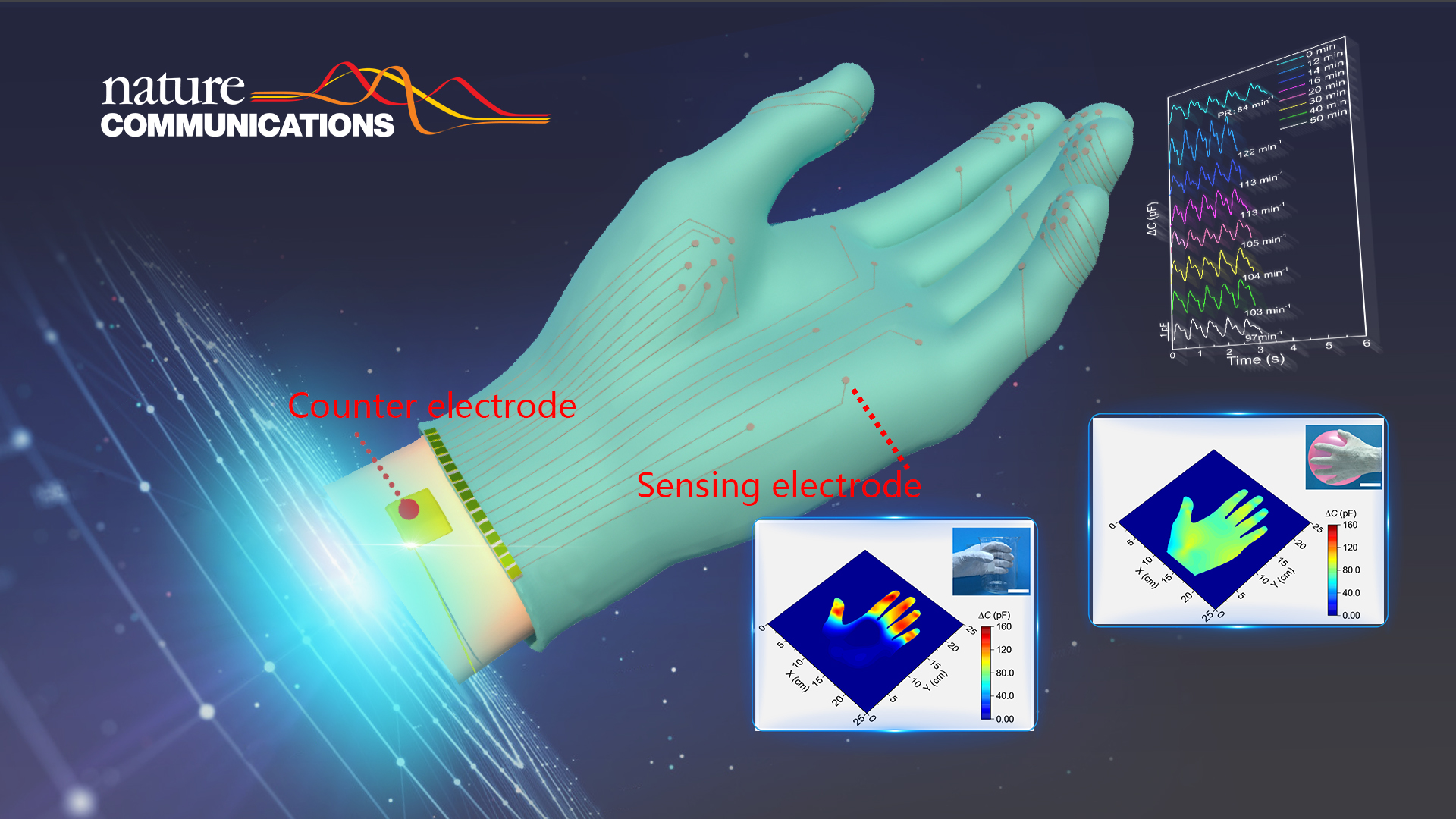Recently, Professor Chuanfei Guo from the Department of Materials Science and Engineering (MSE) at the Southern University of Science and Technology (SUSTech) and Professor Nicholas X. Fang from the Department of Mechanical Engineering at Massachusetts Institute of Technology (MIT) collaborated to use human skin, for the first time, as the active materials for pressure sensing by utilizing the ionic nature of biotissues. Their study, entitled “Skin-Electrode Iontronic Interface for Mechanosensing,” was published in the high-impact journal Nature Communications.

In this study, Prof. Guo from SUSTech and collaborators from MIT constructed a subtle skin-electrode iontronic interface, for which the contact area between the skin and the electrode is highly sensitive to stimuli. The contact area determines the capacitive signal of this interface, and thus mechanical stimuli, which change the area and can be reflected from the capacitive signals. This skin-electrode mechanosensing structure (SEMS) exhibits high sensitivity and high spatial resolution, capable of feeling touch and detecting tiny physiological signals such as fingertip pulse under different skin hydration conditions.

Figure 1. The SEMS and its application in pressure detection and pulse monitoring
The stratum corneum, a natural porous structure covering the skin, keeps partially hydrated and contains numerous ions such as Na+, K+, and Cl–by pumping sweat via the micro-ducts in the stratum corneum. When a metal electrode is in contact with the skin, free electrons serve as the carriers in the electrodes. At the same time, ionic fluxes contribute to the conduction in the tissue to exchange electronic and ionic signals. At the interface between the skin and the electrode, the natural iontronic interface is formed with a capacitance density up to 100 nF·cm-2. The capacitance of the iontronic interface is measured and used as the signal for our SEMS.
The SEMS contains two parts: a sensing electrode (SE) with a microstructured surface that can change the contact area with the skin under pressure, and a highly conformal counter electrode (CE) that has a constant contact area with the skin. The team exploits the instability of high-aspect-ratio microstructures under small loading to achieve high sensitivity of the SEMS. Furthermore, it validates the experimental results of the microstructured electrode with the finite elemental analysis. In addition, the human skin can regulate the emission of sweat through a combined effect of pumping and evaporation through the skin. Such a dynamic perspiration process might affect the signal of the skin-electrode interface.
The team finds that sweating increases the capacitance baseline but has little influence on detecting both physiological and touching signals. In addition, the group finds that motion-related frequencies can be conveniently distinguished from the characteristic frequencies of pulse in the frequency domain, providing an effective way to extract physiological signals from motion artifacts.
Finally, the team shows that the concept can be extended to wearables by demonstrating a fully textile SEMS-based glove for pressure mapping with millimeter-spatial resolution. This glove can reflect the pressure distribution on hands during manipulation, such as holding a balloon or a beaker. This allows wearables to precisely monitor the hand manipulation, and the smart glove may also be used to help patients with tactile dysfunction to recover their sensation.
The simplicity and reliability of the SEMS hold great potential in a wide range of healthcare applications, such as pulse detection in daily life and helping patients with tactile dysfunction recover sensory capability. Excitingly, this new sensing mode works when other biotissues are used, and the research group expects a more comprehensive range of applications of the SEMS.
Pang Zhu, a Research Assistance at SUSTech, Xingyu Hou, a master’s student from SUSTech, and Huifeng Du, a Ph.D. student from MIT, are the co-first authors of this paper. Professor Chuanfei Guo from MSE at SUSTech and Professor Nicholas X. Fang from MIT are the corresponding authors.
This work was funded by the National Natural Science Foundation of China (NSFC), the Guangdong Innovative and Entrepreneurial Research Team Program, the Science, Technology and Innovation Committee of Shenzhen Municipality, and the Shenzhen Sci-Tech Fund.
Paper link: https://www.nature.com/articles/s41467-021-24946-4
Proofread ByAdrian Cremin, Yingying XIA
Photo By